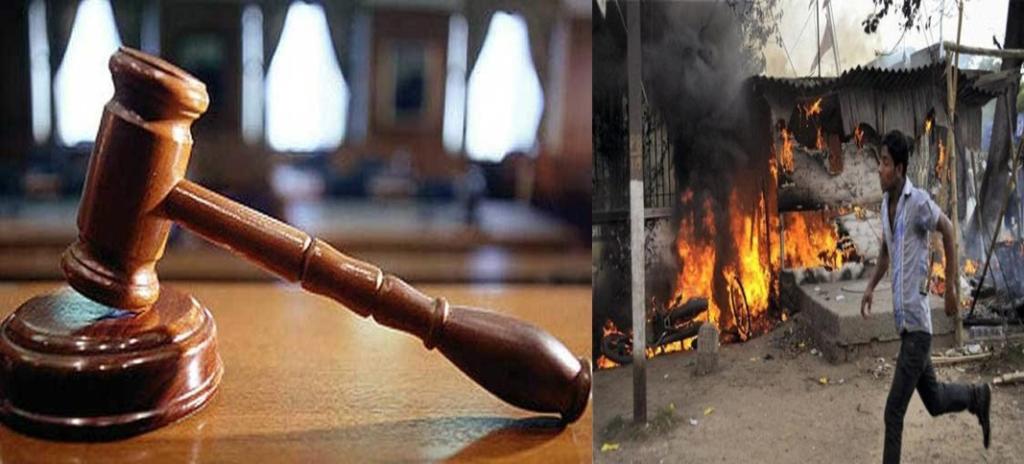According to an Indian Express report, six years after the Muzaffarnagar riots, a local court declared seven people guilty for killing two Hindu youth on Wednesday. The murders had taken place in Kawal village and triggered the 2013 Muzzafarnagar riots that claimed the life of 63 people and displaced over 40,000.
Additional District and Sessions Judge, Himashu Bhatnagar, convicted seven muslim men namely, Muzammil, Mujassim, Furkan, Nadeem, Janangir, Afzal and Ikbal for killing Gaurav and Sachin on August 27, 2013, and rioting. The quantum of their punishment will be announced on Friday.
The court convicted the members of the muslim mob after examining 10 prosecution witnesses and six in their defence. After hearing the judgment, Gaurav’s mother burst into tears and said, “I only want death sentence for accused men. They killed my son for no reason. I want justice. We lost everything, have not celebrated one festival since the incident. There is no happiness; my daughter is left now without a brother. Only justice will bring relief.”
The weirdest thing about the Muzzaffarnagar riots is that, to this day, nobody is a 100% sure about the real reason that triggered the riots. One version says that a Hindu Jat girl was eve-teased and her brothers were killed in retaliation for accusing people of a certain community who teased their sister. Others say that it was a simple traffic accident which snowballed into a full-blown communal riot. But, it was certainly some minor tussle that led to the widespread carnage, that engulfed the entire district of Muzzaffarnagar in its riotous flames. As a result of the riots, thousands of people became refugees. The riots became much more intense and severe because of political intervention by the ministers of the then ruling dispensation. Since then the place is a hotbed of communal incidents. Communal tension between the Hindu and Muslim communities often rises in the Muzaffarnagar area.
The Muzaffarnagar riots were a big blot on the erstwhile SP government. The flash point had not only exposed loopholes in their handling of law and order but some of the decisions taken by them post the mayhem were undoubtedly controversial.
The first incident happened on August 27th, 2013, when the Akhilesh government was very slow to react and sluggish in their response as additional forces were called nearly a week later. By that time armed-mobs had been mobilized and widespread killings had already begun. Vandalism and arson became the order of the day. The entire district came to a screeching halt, despite any government directives. In 3 days, the situation was fully out of control. The riots continued for 3 more days even after the army was summoned, speaks volumes about the number of people who must have been partaking in this mad blood fest.
Eventually, the police made 10,000 to 12,000 preventive arrests, seized 2,000 arms, and filed seven cases under the National Security Act. However, it was too late.
Interestingly, the news channel Headlines Today (India Today) had carried a sting operation against erstwhile UP cabinet minister Azam Khan, where he had allegedly ordered the release of Muslims involved or accused in the Muzaffarnagar riots. The minister had denied these allegations as expected, but it had symbolized the dubious nature of investigations into this matter. Importantly, the justice Vishnu Sahai’s inquiry commission report has listed the reasons for the Muzaffarnagar riots after the deaths of three young men Shanawaz, Gaurav and Sachin in Kamal village of Muzaffarnagar on 2013. The report also had added that the release of 14 Muslim youth, not named in the FIR relating to the murders of Gaurav and Sachin, was seen as an attempt by the state government to appease the minority community.
One of the reasons for the BJP coming to power in UP was the anger among people against the Akhilesh government with respect to the way they tried to politicize these riots.
